 bikshuwage urumaya - භික්ෂුවගේ උරුමය
2400343
bikshuwage urumaya - භික්ෂුවගේ උරුමය
2400343
|
Most ven. Walpola Rahula thero - අග්ගමහාපණ්ඩිත
ධර්මශාස්ත්ර ශිරෝමණී
ත්රිපිටක වාගීශ්වරාචාර්ය පූජ්ය වල්පොළ ශ්රී රාහුල මහාචාර්යපාදයන් වහන්සේ විසිනි.
|
|
2012 |
Contains images
|
|
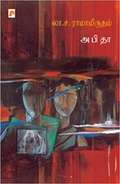 Abitha: Isländernes Lovbog I Fristatens Tid. Text I, Volume 1...
2056109
Abitha: Isländernes Lovbog I Fristatens Tid. Text I, Volume 1...
2056109
|
லா. ச. ராமாமிருதம்
|
9788183689014 |
2005 |
|
|
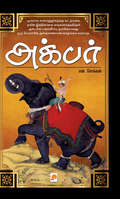 Akbar: அக்பர்
2059046
Akbar: அக்பர்
2059046
|
என். சொக்கன்
|
9788184938289 |
2012 |
|
|
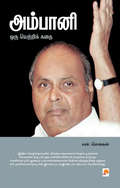 Ambani: அம்பானி
2059047
Ambani: அம்பானி
2059047
|
என். சொக்கன்
|
9788184938470 |
1968 |
|
Read Now
|
 Sahitya Parichay class 7 - Maharashtra Board: ગુજરાતી સાહિત્ય પરિચય ધોરણ 7 - મહારાષ્ટ્ર બોર્ડ
3794512
Sahitya Parichay class 7 - Maharashtra Board: ગુજરાતી સાહિત્ય પરિચય ધોરણ 7 - મહારાષ્ટ્ર બોર્ડ
3794512
|
મહારાષ્ટ્ર રાજ્ય પાઠ્યપુસ્તક નિર્મિત અને અભ્યાસક્રમ સંશોધન મંડળ
|
|
2020 |
Contains images
Contains image descriptions
|
|
 Agnikundma ugelu gulab Biography of late shri Mahadev Haribhai Desai: અગ્નિકુંડમાં ઊગેલું ગુલાબ
3031874
Agnikundma ugelu gulab Biography of late shri Mahadev Haribhai Desai: અગ્નિકુંડમાં ઊગેલું ગુલાબ
3031874
|
નારાયણ દેસાઈ
|
|
1992 |
Contains image descriptions
|
Read Now
|
 Divaswapn: દિવાસ્વપ્ન
3080944
Divaswapn: દિવાસ્વપ્ન
3080944
|
ગીજુભાઈ બધેકા
|
9789383767397 |
2020 |
Contains image descriptions
|
Read Now
|
 yuwak bharti class 11
1061147
yuwak bharti class 11
1061147
|
महाराष्ट्र राज्य माध्यमिक व उच्च माध्यमिक शिक्षण मंडल
संपादक मंडल
|
|
2015 |
Contains images
|
|
 Bhartiya Arthvyastha: भारतीय अर्थव्यवस्था
2832620
Bhartiya Arthvyastha: भारतीय अर्थव्यवस्था
2832620
|
संजीव वर्मा
|
9789351879121 |
2014 |
Contains image descriptions
|
Read Now
|
 ज़हरीली ज़मीन
2854321
ज़हरीली ज़मीन
2854321
|
लॉरेल ए. रॉकफेलर
|
9781071504208 |
2019 |
Contains images
|
|
 नारीवादी कैसे बनें: अधिकारों और समानता के लिए संघर्ष हेतु महिलाओं की मार्गदर्शिका
3620139
नारीवादी कैसे बनें: अधिकारों और समानता के लिए संघर्ष हेतु महिलाओं की मार्गदर्शिका
3620139
|
लॉरेन एलेक्सा
|
9781071565452 |
2020 |
Contains images
|
|
 चरवाहे की प्रेम कहानी: चरवाहे की बावर्ची, चरवाहे का प्यार, ग्वाले की प्रेम कहानी, प्रेम खिलाड़ी, प्रेम के राही
2712070
चरवाहे की प्रेम कहानी: चरवाहे की बावर्ची, चरवाहे का प्यार, ग्वाले की प्रेम कहानी, प्रेम खिलाड़ी, प्रेम के राही
2712070
|
मिस्टी एम. बेलर
|
9781547595396 |
2019 |
Contains images
|
|
 Bharat Ava Vishva Ka Bhugol: भारत एवं विश्व का भूगोल
2846419
Bharat Ava Vishva Ka Bhugol: भारत एवं विश्व का भूगोल
2846419
|
माजिद हुसेन
|
9789387886162 |
2014 |
Contains images
Contains image descriptions
|
Read Now
|
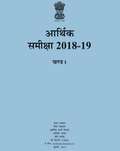 Akhand 1: खण्ड 1: आर्थिक समीक्षा 2018-19
2866124
Akhand 1: खण्ड 1: आर्थिक समीक्षा 2018-19
2866124
|
भारत सरकार वित्त मंत्रालय
|
|
2019 |
Contains images
Contains image descriptions
|
Read Now
|
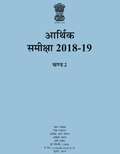 Akhand 2: खण्ड 2: आर्थिक समीक्षा 2018-19
2866125
Akhand 2: खण्ड 2: आर्थिक समीक्षा 2018-19
2866125
|
भारत सरकार वित्त मंत्रालय
|
|
2019 |
Contains images
Contains image descriptions
|
Read Now
|
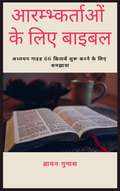 आरम्भ्कर्ताओं के लिए बाइबल: अध्ययन गाइड 66 किताबें शुरू करने के लिए समझाया (Action Packs Ser. #115)
2501095
आरम्भ्कर्ताओं के लिए बाइबल: अध्ययन गाइड 66 किताबें शुरू करने के लिए समझाया (Action Packs Ser. #115)
2501095
|
ब्रायन गुगास
|
9781547578085 |
2019 |
Contains images
|
|
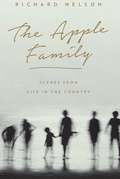 Indian Politics Thinker: भारतीय राजनीति विचारक
2832623
Indian Politics Thinker: भारतीय राजनीति विचारक
2832623
|
नेशनल पेपरबैक्स
ओम् गाबा
|
9781559364560 |
2014 |
Contains image descriptions
|
Read Now
|
 रोष के चुंबन: Its Use In Paint - Primary Source Edition
3750057
रोष के चुंबन: Its Use In Paint - Primary Source Edition
3750057
|
निकोला आर व्हाइट
|
9781071572153 |
2020 |
|
|
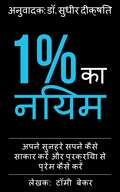 1% का नियम: प्रक्रिया से प्रेम कैसे करें और अपने सुनहरे सपने कैसे साकार करें
2580614
1% का नियम: प्रक्रिया से प्रेम कैसे करें और अपने सुनहरे सपने कैसे साकार करें
2580614
|
टॉमी बेकर
|
9781547584130 |
2019 |
Contains images
|
|
 365 प्रेरणादायक विचार: अधिक खुशी, सफलता और संतुष्टि के लिए दैनिक प्रेरक वचन। (Dinner For Two 365 Ser. #Vol. 1)
2501632
365 प्रेरणादायक विचार: अधिक खुशी, सफलता और संतुष्टि के लिए दैनिक प्रेरक वचन। (Dinner For Two 365 Ser. #Vol. 1)
2501632
|
ज़ेबियर के. फर्नाओ
|
9781547581108 |
2019 |
Contains images
|
|
 अब्राहम, इसहाक और याकूब के भगवान
3356140
अब्राहम, इसहाक और याकूब के भगवान
3356140
|
गेब्रियल एग्बो
|
9781071540152 |
2020 |
Contains images
|
|
 रिसिव्ह यूअर हीलिंग
2580786
रिसिव्ह यूअर हीलिंग
2580786
|
गेब्रियल एग्बो
|
9781547586219 |
2019 |
Contains images
|
|
 Pratinidhi Kahaniyan-Geetanjali Shree
3149473
Pratinidhi Kahaniyan-Geetanjali Shree
3149473
|
गीतांजलि श्री
|
9788126719235 |
2020 |
Contains image descriptions
|
Read Now
|
 नीलक द्वीप
3570676
नीलक द्वीप
3570676
|
कैटरीना बोवलिन-मैकेंजी
|
9781071557402 |
2020 |
Contains images
|
|
 वजन घटाने के लिए आंत शुद्ध: बेहतर स्वास्थ्य, अधिक ऊर्जा, और विषहरण
3620427
वजन घटाने के लिए आंत शुद्ध: बेहतर स्वास्थ्य, अधिक ऊर्जा, और विषहरण
3620427
|
केनेथ ब्राउन
|
9781071562857 |
2020 |
Contains images
|
|